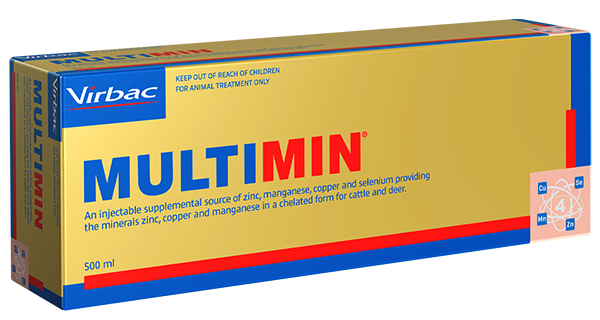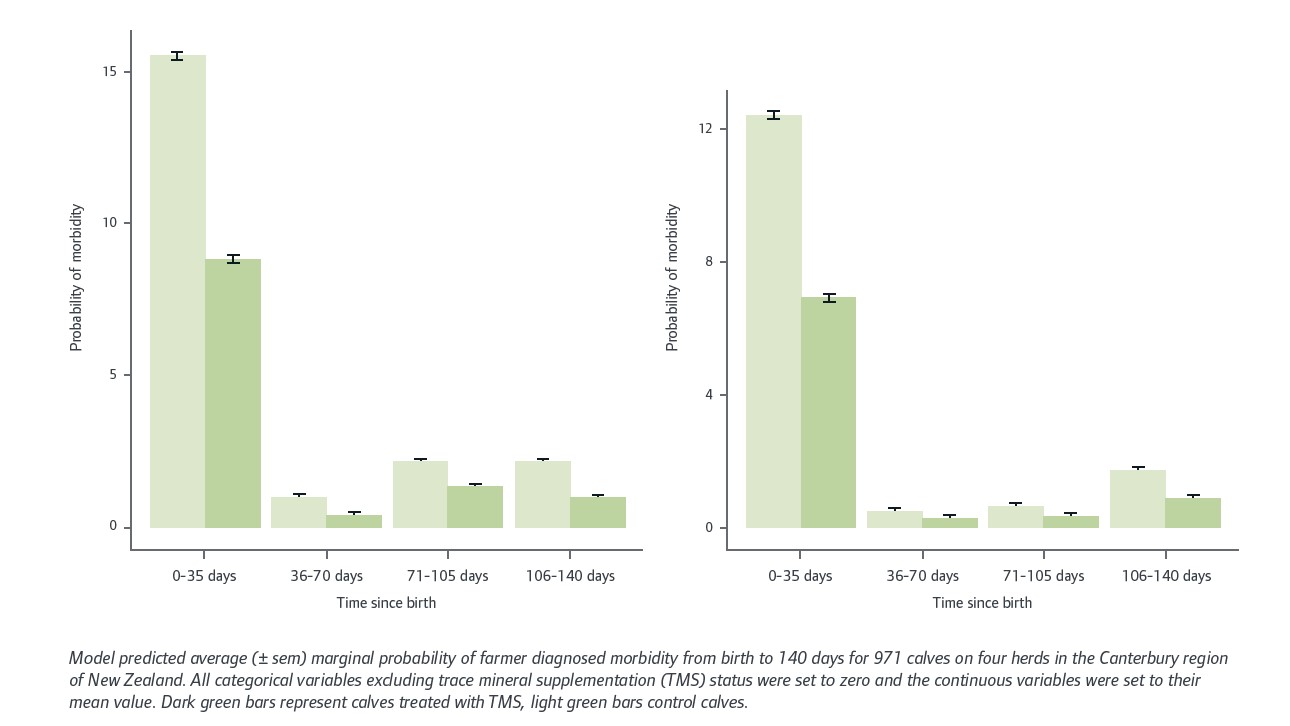
Multimin use in calves is well documented and generally well accepted. Briefly, the use of a 1ml dose in newborn calves has been shown to reduce death and disease in calves by approximately 50%. What is interesting about the studies, is the effect of reducing disease and death was the same whenever Multimin was given.
The degree of the effect only differed depending on the amount of disease or death present with generally, higher disease rates and/or death at the beginning of a calf’s life – hence, the greatest effect seen there and the relevance of a Multimin dose at birth.
The second most stressful time in a calf’s life occurs at or around weaning. Calves are taken off milk with their diet consisting of grass and hopefully still some meal, they are often mixed with different mobs and may be transported to another area or farm. A very stressful time indeed which would suggest it is a time when their immune system is under pressure and so would benefit from Multimin support.
That immune support also relates to how well calves respond to routine vaccines at this time. Studies have shown calves given Multimin and vaccinated have greater vaccinal response compared to calves vaccinated without Multimin. The simple message is, Multimin in calves should be a two-shot regime with one dose at birth, and one shot at weaning.
 “We started using Multimin in 2019 in our calves. Since then we have also been using it in our milking herd and continue to be impressed with the results. By working with our vet, Scott, we plan to continue monitoring our cattle so we can use Multimin at the right time and optimise our results.”
“We started using Multimin in 2019 in our calves. Since then we have also been using it in our milking herd and continue to be impressed with the results. By working with our vet, Scott, we plan to continue monitoring our cattle so we can use Multimin at the right time and optimise our results.”
Pete Saywell, Operations Manager Pukaki Flats
Again, there is a lot going on with her. She is hitting peak lactation; grasses are going reproductive and actually cycling is very energy dependent. All this happening while she must conceive and retain her pregnancy. A large NZ study where Multimin was given to cows pre-mating showed improved conception rates.
While a specific number was mentioned in terms of improvement (3% from memory), I think the key is not the number but more the fact there was support via Multimin for the very young pregnancy. The key driver of efficiency and profitability on dairy farms at that time of the year is getting cows in-calf early that hold their pregnancies so produce more days in milk next season. Return on investment for the use of Multimin pre-mating has been shown to be five to one and attributable to pregnancies saved.
Multimin®, with its unique combination of zinc, copper, selenium and manganese, is the right mix of trace elements if given at the right time. We know, how important copper is for immune function, bone growth and red blood cell production. Manganese also helps with bone development, is a free radical scavenger and supports fertility functions. Selenium is important for muscle function, is also a free radical scavenger and crosses the placenta so important for calf health.
Finally, zinc; with multiple benefits but particularly important for the reproductive cycle with a lack of zinc leading to delayed ovulation and decreased conception rates. It is also important for growth of the developing egg as well as reducing oxidative stress in the uterus after calving to improve uterine involution and readiness to hold a conception. Multimin currently contains 40gm/ml of zinc. Zinc is so critical… what if there was more?
Watch this space and talk to your Vetlife veterinarian about Multimin use this season.

Multimin® is registered pursuant to the ACVM Act 1997, No. A009374.
Copyright © 2023 Virbac New Zealand Limited. All rights reserved.